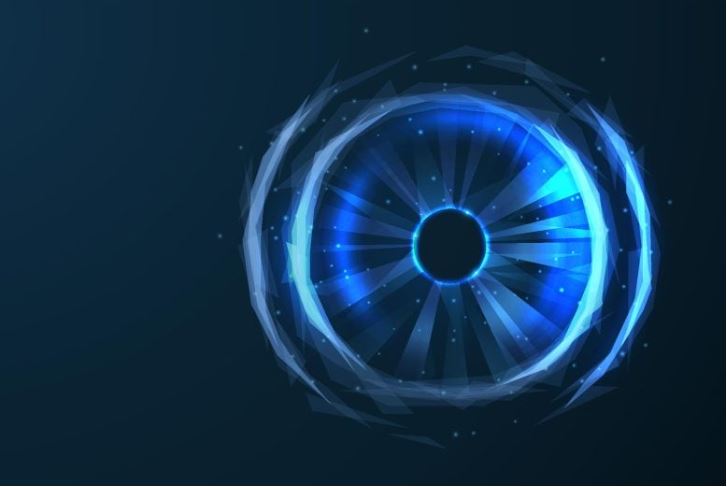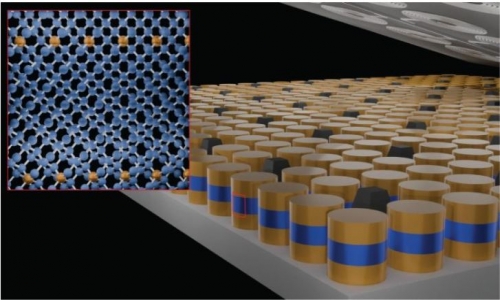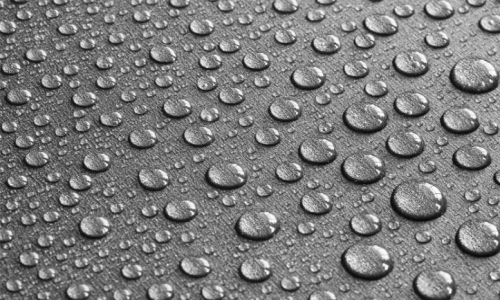


 12:32:43
12:32:43  2025-11-10
2025-11-10  30
30

Cameras have become a constant presence in daily life. Over the past two centuries, they have evolved from rare inventions into essential tools used across countless technologies. Today, cameras are found in smartphones, laptops, vehicles, surveillance systems, aircraft, and satellites that capture images of Earth from above. As the push to miniaturize mechanical, optical, and electronic components continues, researchers are seeking ways to design cameras that are smaller, lighter, and more energy efficient.
To meet this challenge, scientists are exploring ultra-flat optics as an alternative to the bulky lenses in most cameras. Unlike traditional curved glass or plastic lenses, ultra-flat optics—such as metalenses—use an extremely thin layer of nanostructures to manipulate light. These structures make them hundreds or even thousands of times smaller and lighter than standard lenses.
However, one major obstacle remains: a visual distortion called “chromatic aberration” limits the ability of ultra-flat optics to capture clear, full-color images when using a large aperture (the opening in a lens that lets light enter). While a large aperture allows more light and improves image brightness, this distortion has long prevented ultra-flat lenses from achieving the same image quality as conventional cameras. For decades, researchers viewed this as an insurmountable problem.
A breakthrough in flat-lens imaging
That is, until now.
In a groundbreaking study published in Nature Communications, a team of researchers from the University of Washington’s Department of Electrical and Computer Engineering (UW ECE) and Princeton University’s computer science department demonstrated that a large-aperture, ultra-flat optic can capture high-quality color images and video comparable to those produced by traditional lenses. This result overturns the long-standing assumption that a single large-aperture metalens could not produce sharp, full-color images.
The team’s new ultra-flat optic is a metalens just one micron thick. When mounted on its supporting substrate, the entire structure measures only 300 microns—about the combined width of four human hairs. This makes it hundreds of times thinner and smaller than a standard refractive lens. Replacing conventional multi-lens systems with such a metalens could significantly reduce the size, weight, and power consumption of imaging devices.
The potential uses for this innovation are extensive. The metalens could be integrated into nearly any type of camera, particularly where space and weight are limited. Smartphones and laptops would benefit immediately, but the technology could also be applied to drones, cars, and satellites that require compact, efficient imaging systems. Medical devices such as endoscopes and angioscopes could also take advantage of the smaller lens design, allowing doctors to see farther inside the body and improve diagnostic accuracy.
Collaboration driving innovation
“Our work shows capability, what can be done with ultra-flat optics. I think our research pushes the field forward, and there will be a lot more of this type of work in the future.” — UW ECE Research Assistant Professor Johannes Fröch
This achievement is an outgrowth of a longstanding collaboration between the senior authors of the paper, Arka Majumdar, a UW ECE professor who holds a joint appointment in physics, and Felix Heide, an assistant professor of computer science at Princeton University. Majumdar, Heide, and their research teams have produced some dramatic advances in optics over the last few years, such as shrinking a camera down to the size of a grain of salt while still capturing crisp, clear images, and engineering a camera that can identify images at the speed of light.
Majumdar’s lab team also has a strong track record of reimagining optics for smartphone cameras and other devices. This latest research advance emerged from a previous joint effort overseen by Majumdar and Heide, which was led by Ethan Tseng, a doctoral student in Heide’s lab who was also a co-author of this paper.
Lead authors of the paper were UW ECE Research Assistant Professor Johannes Fröch and Praneeth Chakravarthula, an assistant professor of computer science at the University of North Carolina at Chapel Hill. Chakravarthula was a postdoctoral scholar in Heide’s lab at Princeton University when this research took place.
“Previously, it was assumed that the larger the metalens is, the fewer the colors there are that can be focused,” Fröch said. “But we went beyond that and beat the limit.”
“We treated this as a holistic system,” Chakravarthula added. “That allowed us to leverage the complementary strengths of optics and computation, where we didn’t design these different parts of the imaging system sequentially, but instead, we jointly optimized them to maximize performance.”
Other co-authors of the paper included UW ECE alums Shane Colburn, Alan Zhan, Forrest Miller, Anna Wirth-Singh, and Zheyi Han as well as former UW ECE postdoctoral researcher Quentin Tanguy and Jipeng Sun, a doctoral student in Heide’s lab. UW ECE Professor Karl Böhringer also co-authored the paper and contributed to the effort, supervising the students who fabricated the ultra-flat optic in the Washington Nanofabrication Facility. Böhringer is the director of the Institute of Nano-Engineered Systems, of which Majumdar is a faculty member.
AI-powered computation enables high-resolution images
In most imaging systems, multiple refractive lenses are used because a single lens cannot bring all colors into focus. This issue, specifying “chromaticity,” becomes exacerbated in ultra-flat optics. Many scientists and engineers even consider metalenses to be hyperchromatic because all the light cannot be brought into focus at a given point. This limits the ability of ultra-flat optics to have broader apertures and still be able to do well in terms of imaging visible light.
Previous to this research advance, it was not thought possible to build metalenses with large apertures that can produce a high-quality image. Most earlier efforts with metalenses were working with camera apertures that were less than one millimeter in size.
In comparison, the aperture in the camera the research team engineered is one centimeter in size, significantly larger. The team demonstrated that with a strong computational backend co-designed with the optical hardware, even larger apertures are possible.
“People have tried purely physics-based or heuristic, handcrafted optical designs to address this issue, but in our work, we treat it as a computational problem,” Chakravarthula said. “We used AI tools to figure out what should be the shape of these lens structures and what should be the corresponding computation.”
The computational backend of the team’s optical system incorporated AI — a probabilistic diffusion-based neural network. This AI-powered backend takes in the data received from the ultra-flat optic and outputs images with lower haze, better color accuracy, more vivid hues, and better noise reduction. This all results in high-quality color images that are almost indistinguishable from what can be captured with a conventional camera.
“Previously, I was always considering problems from the optical side of the system,” Fröch said. “But this project really showed me that if you consider the whole system and then try to leverage the strength of each part — the optics and the computational backend — they can work synergistically to produce this really good image quality that we’ve shown here.”
Working toward even sharper images, new modalities
Next steps for the research team include further refining and improving image quality produced by their ultra-flat optic. They are also planning to explore different modalities for the optical system they developed that could be useful for augmenting human vision. These modalities involve capturing and working with information from light that is beyond what is visible to the human eye.
To illustrate, many animals, such as butterflies, can see far beyond the spectrum of light visible to humans and gain useful information from different characteristics of light, such as its polarization — the orientation of light waves as they travel through space. Animals use this information to find food, evade predators, and attract mates. In a similar fashion, humans can use light beyond what people are able to see to enable multimodal sensing for polarization or spectral information. An example of this is light detection and ranging, or LiDAR, which is currently being used in autonomous vehicles and in smartphones to assist with augmented reality, virtual reality, and depth-perception applications. The research team anticipates that their ultra-flat optic could be applicable to these sorts of technologies.
Commercialization of this ultra-flat optic is also a distinct possibility in the near future. Metalenses are suitable for mass manufacturing in foundries using nanoprint lithography, which makes the optics affordable and scalable. The team is currently talking with a UW professor in the ophthalmology department, who is interested in creating small, lightweight, hand-held devices that would be easier to use for eye inspections. Fröch also said there are startups that might be interested in commercializing this technology. He noted as well that the team’s research could open new avenues for others in the field of optics to explore.
“I think the overall takeaway here is that even when there are perceived limitations to solving a certain problem, it doesn’t mean it’s not possible to solve it,” Fröch said. “Our work shows capability, what can be done with ultra-flat optics. I think our research pushes the field forward, and there will be a lot more of this type of work in the future.”
Reality Of Islam |
|

Cameras hav

For years,

New scienti

This is the
 9:3:43
9:3:43
 2018-11-05
2018-11-05
10 benefits of Marriage in Islam
 7:5:22
7:5:22
 2019-04-08
2019-04-08
benefits of reciting surat yunus, hud &
 9:45:7
9:45:7
 2018-12-24
2018-12-24
advantages & disadvantages of divorce
 11:35:12
11:35:12
 2018-06-10
2018-06-10
 6:0:51
6:0:51
 2018-10-16
2018-10-16
 8:3:0
8:3:0
 2018-06-21
2018-06-21
 4:2:19
4:2:19
 2022-10-10
2022-10-10
 8:19:41
8:19:41
 2018-06-21
2018-06-21
 8:4:21
8:4:21
 2022-01-08
2022-01-08
 6:0:8
6:0:8
 2023-03-19
2023-03-19
 12:10:56
12:10:56
 2022-11-17
2022-11-17
bahlool & the throne of haroun rashid
 8:20:35
8:20:35
 2018-06-21
2018-06-21
 5:41:46
5:41:46
 2023-03-18
2023-03-18
| LATEST |